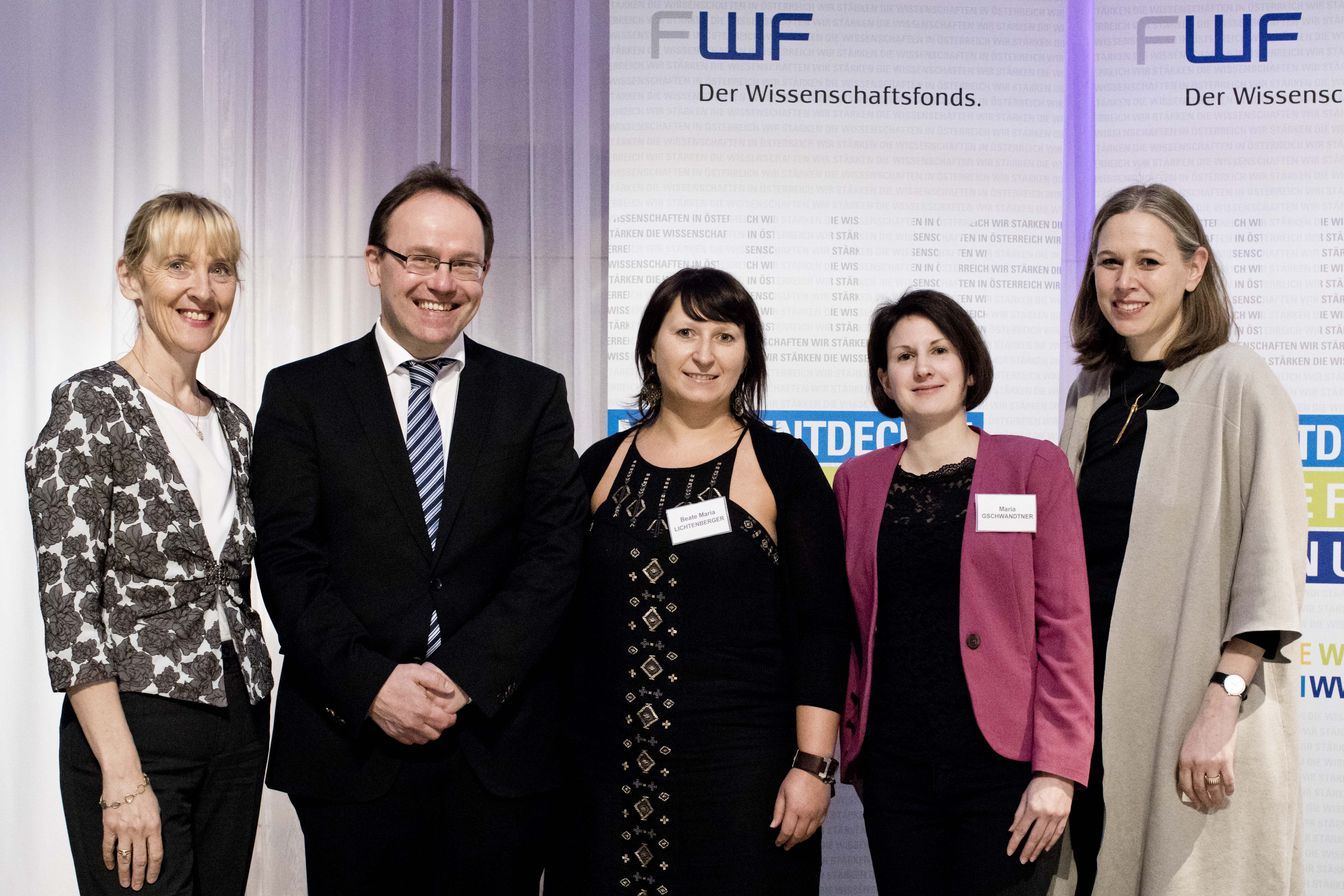
(Vienna, 15-03-2017) Maria Gschwandtner and Beate Maria Lichtenberger from the Department of Dermatology at the MedUni Vienna have been distinguished for their research projects by the Austrian science fund FWF within the scope of the Elise-Richter programme.
The FWF – Austrian Science Fund is Austria’s central institution for the funding of basic research. The Elise Richter Programme for Senior Postdocs provides funding for women who have the goal of qualifying to apply for a national or international professorship (post-doctoral or arts-based post-doctoral qualification or equivalent qualification). The target group is highly-qualified female researchers wishing to aspire to a university career.
Maria Gschwandtner
New functions of mast cells in the skin
Mast cells are central immune cells in the skin which are located in the subcutis on the periphery of the epidermis, in close proximity to nerves and blood vessels. They are therefore are able to interact with many other cell types in the skin through direct contact or through the release of soluble substances. In the planned study, we aim to investigate how exactly histamine influences the skin barrier, i.e. what happens after the bonding of histamine to its receptor on keratinocytes. For this purpose, a multitude of different signal paths are to be investigated in an initial step, in order to selectively analyse individual factors which are considered significant in more detail through further experiments, and to reveal their role in the histamine-mediated barrier disorder. The identification of responsible factors could prove important for the development of new therapies which prevent a neurodermatitis-related defect in the skin barrier. In further studies, we attempt to identify other previously unknown mast cell proteins which are similarly significant for the interaction of the mast cells with other cells in the skin. In order to achieve this objective, a transcriptome and proteome analysis has been executed, i.e. all the proteins produced in the mast cells have been investigated in their entirety.
On the basis of this extensive pool of data, it has already been possible to define two new mast cell markers and plan the investigation of three further new proteins in the current study. The further characterisation of these proteins includes the confirmation of their occurrence in cultivated mast cells and in the mast cells of healthy and diseased skin. The further investigation of their function is then to take place in a subsequent step, in a human skin model and in cultivated skin, with specific regard to the interactions with other cell types. Both project parts will contribute towards a better understanding of mast cells and their functions in healthy skin and in diseases such as neurodermatitis.
Beate Maria Lichtenberger
CAFs – a target for new cancer treatments
Over the past years, the image of cancer as a group of malignantly transformed cells has changed significantly. The influence of blood vessels, the immune system, the extracellular matrix and other cells of the tumour tissue on the progression and metastasis formation of the tumour have been illustrated in numerous experimental studies. However, one cell type which is in constant and close contact with the cancer cells - the fibroblast – has not yet received the necessary attention from the scientific community. The role played by latent or activated fibroblasts during cancer development is still uncertain, but in the meantime, convincing data exists to show that so-called cancer-associated fibroblasts (CAFs) differ significantly from those in normal tissue. Using so-called “lineage tracing" techniques in combination with single cell RNA sequencing, Beate Lichtenberger aims to provide an insight into the origin of CAFs and to analyse the heterogeneity of the tumour stroma at both molecular and functional level, and to discuss the influence of different CAF subpopulations on the development of malignant tumours.
This study should not only improve our understanding with regard to the role of the tumour stroma and the microenvironment during carcinogenesis and metastasis formation, but should also indicate new targets for cancer treatment and provide new markers for immune therapy. Furthermore, Beate Lichtenberger aims to provide new biomarkers for the evaluation of the metastasis formation potential of a tumour which may possibly represent a large step towards personalised cancer treatment.
Elise-Richter programme by the FWF
http://www.fwf.ac.at/de/forschungsfoerderung/fwf-programme/richter-programm/